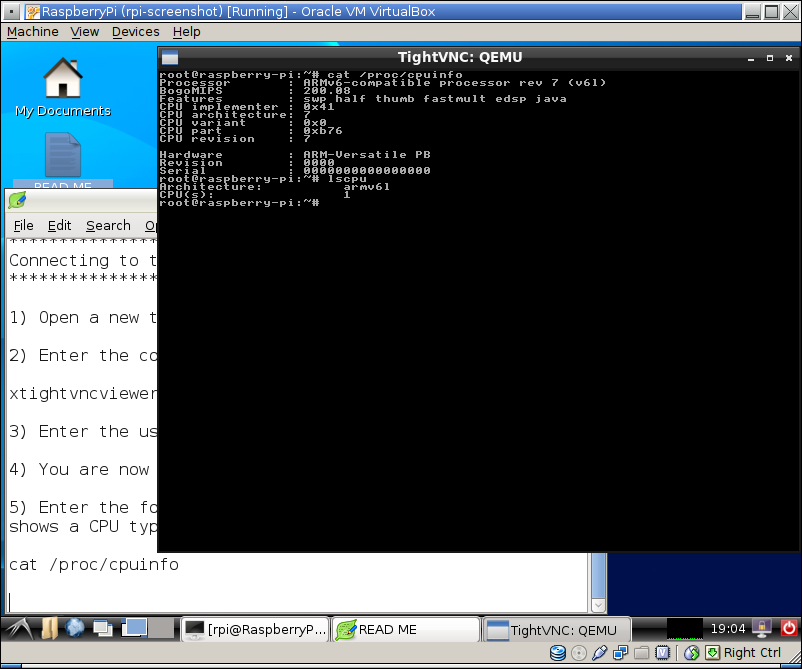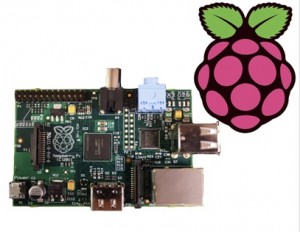Raspberry Pi – Cheap Computing for the Masses
Recently I have come across Raspberry Pi, a project to create a $35 computer (for model B). The project started in 2006 and will soon be on sale in the United States. The reason I say “soon” is that these are incredibly difficult to find. Before talking about anything else, we need to look at the specs.
Raspberry Pi Specs
| Target price: | US$ 35 |
| SoC: | Broadcom BCM2835 (CPU, GPU, DSP, and SDRAM) |
| CPU: | 700 MHz ARM1176JZF-S core (ARM11 family) |
| GPU: | Broadcom VideoCore IV,[57] OpenGL ES 2.0, 1080p30 h.264/MPEG-4 AVC high-profile decoder |
| Memory (SDRAM): | 256 MB (shared with GPU) |
| USB 2.0 ports: | 2 (via integrated USB hub) |
| Video outputs: | Composite RCA (PAL & NTSC), HDMI (rev 1.3 & 1.4),[58] raw LCD Panels via DSI |
| 14 HDMI resolutions from 640×350 to 1920×1200 plus various PAL and NTSC standards. | |
| Audio outputs: | 3.5 mm jack, HDMI |
| Onboard storage: | SD / MMC / SDIO card slot |
| Onboard network: | 10/100 Ethernet (RJ45) |
| Low-level peripherals: | 8 × GPIO, UART, I²C bus, SPI bus with two chip selects, +3.3 V, +5 V, ground |
| Power ratings: | 700 mA (3.5 W) |
| Power source: | 5 volt via MicroUSB or GPIO header |
| Size: | 85.60 × 53.98 mm (3.370 × 2.125 in) |
| Weight: | 45 g (1.6 oz) |
The Creator
Darren Kitchens from Hak5 interviews raspberry pi creator at makerfaire 2012.
Virtual Pi with VirtualBox
If you can’t get your hands on a raspberry pi board but what to see what it is like, you can download the RaspberryPi VirtualBox appliance. Once downloaded, just import as an alliance, reinitialize the mac address, and boot it up.
- user: rpi
- password: password
Obviously change your password with
passwd
when you first login. Also, you may need to
rm -i /etc/udev/rules.d/70-persistent-net.rules
and reboot to get networking running. Once that’s done, open the
README
file on the desktop and follow the directions. The only thing I couldn’t get to essentially work out of the box was the networking. Here is a screenshot from my quick installation.

Raspberry Pi and Medicine
There has been a lot of talk about integrating tablet computers into our medical workflows. A very cheap, ultra-mini computer, would have some very interesting uses in medicine and medical education. Here are some brainstorming ideas off the top of my head.
- quick presentations anyway in the hospital by packaging with a pocket projector to do
- provide wireless access for teams rounding at hospitals without available wifi access (our Veteran’s Affairs hospital) by packaging with a usb EVDO and usb wireless adapter to
- pod-catcher that be plugged into your car stereo system to listen to lectures and could be sync’ed by plugging into network at work by packaging with a small rechargeable battery pack
- educational patient videos could be shown by pluggin the device into the hdmi input on TV’s in patient or waiting rooms when coupled with small blue tooth keyboard or even remote control
- mobile web application and database server for research assistants
- cluster computing for genomics or proteomics by networking multiple devices together. A 23 node cluster, even factoring cost of a 24-port switch, comes to only $900
Computer Science Education
Ben Heck made an old school computer with a cartridge slot to add I/O boards based on raspberry pi.
Conclusion
This is a very exciting product and we’ll have to wait and see the many ways it will be utilized.
